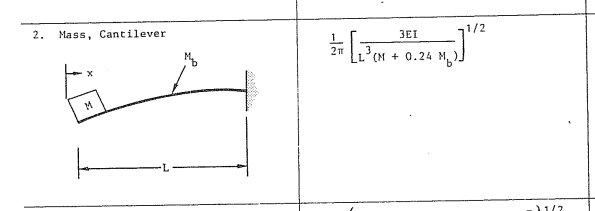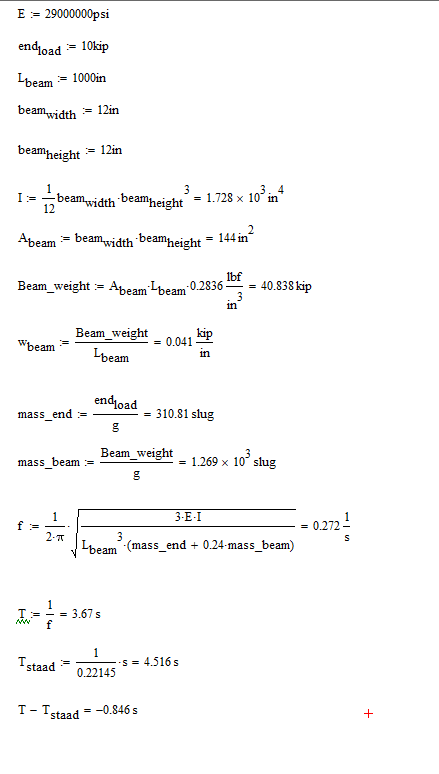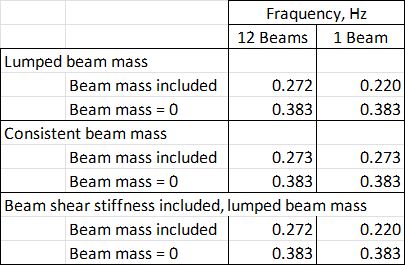nicoga3000
Civil/Environmental
I am trying to determine why STAAD provides a different frequency for a simple beam with concentrated mass model versus proven classical methods for the same model. The results are different enough to merit a discussion.
If any of you have STAAD, I have attached my input file. You can perform a Rayleigh or Modal analysis as the results are the same for this structure (just uncomment the request).
The method I used is a cantilever beam of mass Mb with a concentrated mass of mass M at the end. The Blevins book on Natural Frequencies lists the frequency as:


Here's my quick and dirty Mathcad showing the results:

As you can see, the difference is not insignificant. A nearly 1s difference in the period is tremendous for our structures.
Any input on the difference would be awesome. Thank you!
If any of you have STAAD, I have attached my input file. You can perform a Rayleigh or Modal analysis as the results are the same for this structure (just uncomment the request).
The method I used is a cantilever beam of mass Mb with a concentrated mass of mass M at the end. The Blevins book on Natural Frequencies lists the frequency as:


Here's my quick and dirty Mathcad showing the results:

As you can see, the difference is not insignificant. A nearly 1s difference in the period is tremendous for our structures.
Any input on the difference would be awesome. Thank you!

![[smile] [smile] [smile]](/data/assets/smilies/smile.gif)
